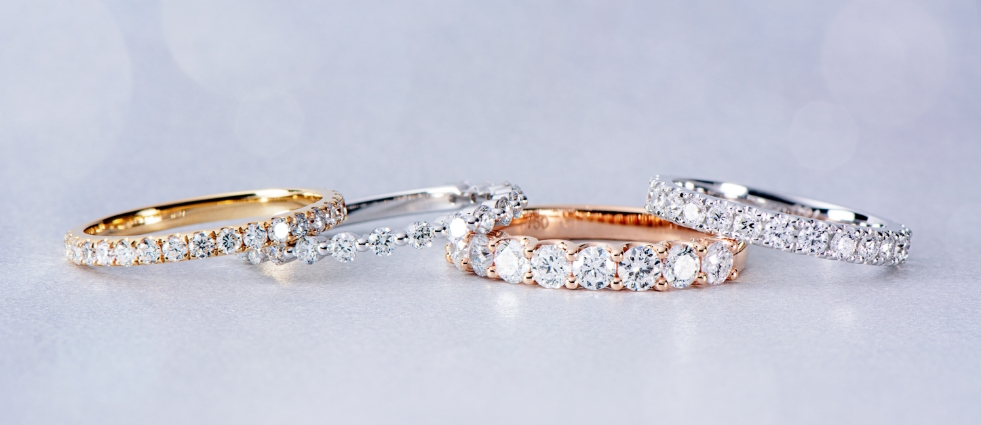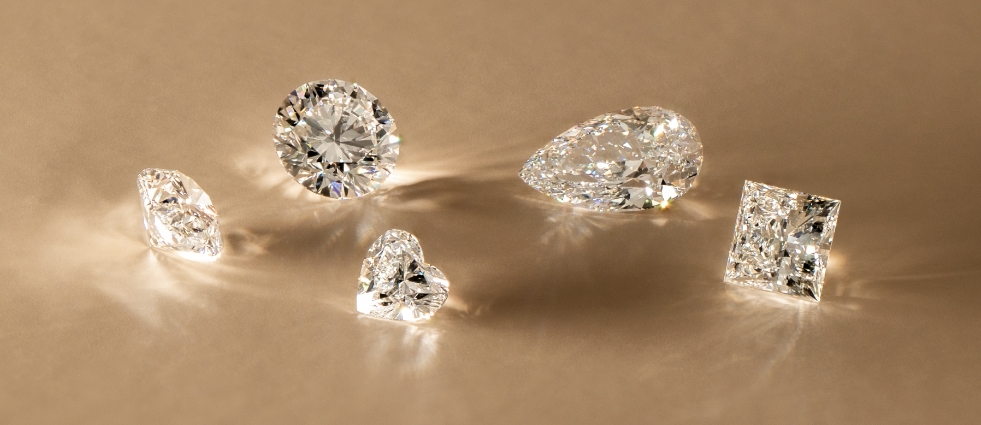Diamonds VS white sapphires
May 31, 2021
There are a lot of misleading claims thrown around the internet by some unsavoury sellers to push their products onto unwary customers. Therefore, we have tasked our top gemmologists to publish a brief article to hopefully shed light on the key differences between diamonds and white sapphires. By the end, you will have a greater understanding of why white sapphires are an inferior choice when it comes to engagement rings.
White sapphires do not reflect light back, unlike diamonds.
Diamonds are a league on their own, and no synthetic alternative can mimic their unique qualities. When you look at a diamond from the top, they dazzlingly reflect back all the light through total internal reflections, like mirrors. Henceforth, when looking at it from the top, you cannot see through a diamond. On the other hand, since white sapphires do not reflect light back like true diamonds, light simply goes through the stone.
White sapphires do not sparkle like diamonds.
Only real diamonds have the signature sparkle owing to their internal reflection. White sapphires don’t sparkle because they don’t reflect light. This distinct lack of sparkle and transparency makes differentiating between white sapphires and diamonds very easy with the naked eye.
White sapphires are not durable enough
White sapphires are not fit for engagement rings that are meant to be worn for many years. Although white sapphires can be made to be strong and somewhat resistant to scratches, there are nowhere near the strength and durability of diamonds. White sapphires, unlike diamonds, do not last forever. If the main stone of an engagement ring is a white sapphire, the stone WILL accumulate scratches and chips over time. If worn regularly, the sapphire, with what little sparkle it had, to begin with, will get muted and hazy looking within 2-5 years and will therefore need to be replaced.
On the contrary, diamonds are the strongest natural material known to man, henceforth the mantra: “Diamonds are Forever”.
White sapphires are not cut like diamonds.
To keep the prices of white sapphires significantly cheaper than diamonds, the amount of care and workmanship that goes into cutting them is mediocre at best and never to the same level as diamonds. The cut quality has a significant impact on the overall look of the stone, and the discrepancy between the cut quality of diamonds and white sapphires is just one more clear indicator of the difference between the two.
The price difference
Natural diamonds are always expensive, especially compared to white sapphires. But that equation changes when counting in man made diamonds. With the proliferation of lab-created diamonds in the retail market through the effort of companies like Novita Diamonds, you no longer need to compromise. You can now get your very own lab-grown diamond that is identical in every aspect to a mined diamond without the artificially inflated price.
Interesting Note:
Although far from an ideal choice for the centre stone in an engagement ring, white sapphire reigns supreme for a very specific application where transparency and durability, particularly its resistance to scratches, are required or desired, like the glass for premium watches from brands like Rolex, TAG, Omega, AP and many others.
Interesting find:
The same characteristics that make white sapphires so appealing for watches also lend it to becoming more popular as a vital component in newer smartphones. Companies like Apple and Samsung are adopting white sapphire as the outer glass for their cameras to provide clarity and scratch resistance.
Use in the jewellery industry:
Over our long exposure to the jewellery industry, we have observed the outsized use of white sapphires in gold jewellery made in India. This is primarily due to India being the place where most of the world’s white sapphires get cut, resulting in their cost becoming viable for use in gold jewellery, which consists of bracelets, necklaces and earrings but not engagement rings.








